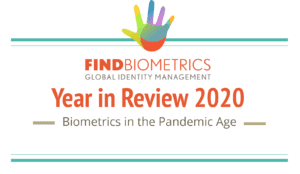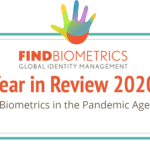Adoption of behavioral biometrics solutions has been on the rise for years now, but, like so many other trends in the industry, this has been accelerated in 2020 thanks largely to the COVID-19 pandemic. Naturally, this is likely to be a hot topic in 2020’s FindBiometrics Year in Review, so it’s a good time to review the year in behavioral biometrics.
First, the basic argument for behavioral biometrics, and why it has resonated so strongly in the wake of COVID-19. Behavioral biometrics technology is designed to automatically look for patterns in end users’ behavior that can indicate signs of fraud. Some behavioral biometrics solutions are actually able to authenticate users based on behavioral patterns, but all are essentially pitched on the same premise of automatically fighting fraud without extra input from the end user.
Behavioral biometrics have tended to be popular in the world of financial services, which has seen pronounced digitization trends in recent years, but it’s also being adopted in e-commerce and other application areas. Now, in 2020, COVID-19 and attendant social distancing efforts have pushed far more end users into digital channels than ever before, whether they’re bank customers setting up online accounts, consumers making online purchases, or employees entering remote work setups for the first time. This, in turn, has made behavioral biometrics even more popular.
The growing excitement about behavioral biometrics can be seen both in deployments of the technology and in investor interest. In late summer, Entersekt integrated NuData’s behavioral biometrics technology into its financial services-focused security platform, after Jack Henry & Associates integrated the solution into its Banno Digital Platform a couple of months prior.
In June, as the first wave of the pandemic was winding down, BioCatch announced that it had reached the milestone of 150 million behavioral profiles on its platform, not long after raising $145 million in a Series C funding round. Another behavioral biometrics startup, NS8, raised $123 million, reporting that it had seen a 350 percent increase in demand for its services between February and April.
This enthusiasm is poised to continue, with an Allied Market Research report issued this past summer predicting that the behavioral biometrics market will rise from a market value of $720 million in 2017 to $3.92 billion by 2025. Such projections may even be revised upward when the dust has settled from 2020. What’s clear enough now, though, is that behavioral biometrics has solidified its position as a major modality in 2020. To what extent? The results of the 2020 FindBiometrics Year in Review are likely to offer some clues.
Be sure to participate in order to make your voice heard in our survey results – it only takes a few minutes to fill it out:
Create your own user feedback survey–
December 10, 2020 – by Alex Perala







Follow Us